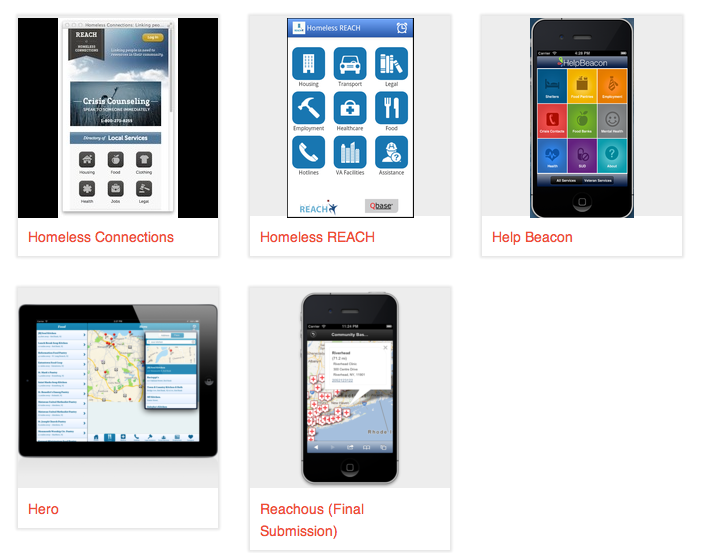
Homeless people use their mobile as their primary access point for services and communication.
Sydney University are doing research into how homeless people use mobile devices to access services and find shelter. There is indication that for many homeless people, of which 26% are women and children who have had to flee their family home, their mobile device is the primary access point for government and not for profit services. Some organisations have understood the potential of this insight to serve their patrons better and are creating information in a format that is friendly to mobile devices.
Mobile friendly services for the homeless, aim to connect the homeless person with accurate information and locations for food banks and soup kitchens, available beds in shelters and access to mental health services. Information relating to transport, legal and social services as well as employment assistance and help lines are also highly sought after.
Mobile web apps for the Homeless
In 2012 Project Reach put together the “Mobile App Challenge” campaign. They asked for submissions from mobile web developers to help solve the problem of homeless people not being able to access information and services to support them.

Mobile web applications give homeless people access food & shelter and to social and legal services.
You can view each of the submissions in detail, but they each aim to do the same thing: Make it easier for homeless people to access critical information that will improve their lives.
Some of the apps provided require download, but most of them have been built so that they are accessible via web browsers on mobile phones. This is a really important distinction. I can’t speculate what percentage of homeless people have a smartphone. So it’s important that homeless services are accessible via the mobile web, not just through mobile apps. I can imagine that some homeless people may have a smartphone, but we can assume that many don’t. This is something that was immediately apparent to some young UNSW students who built a mobile app for the Hope Street Homeless not for profit at Sydney’s “appathon” in April.
It doesn’t look as though the Hope Street homelessness mobile app is available yet (I couldn’t find it on their site via my mobile phone or in the Apple app store), but its probably in bug testing (it was only developed in April).
“Appathon” may or may not have been inspired by Project Reach’s “Mobile App Challenge”, but its the same kind of idea, one year later. The only difference is that Reach’s campaign was specific to homelessness, whereas Appathon was for developers to create mobile apps for charities across a number of sectors (healthcare, suicide prevention, homelessness and sexual slavery). Events like appathon are not uncommon in the development industry, they are often called “Hackathon’s” or “Dev Jams”. But basically they are community building events, they’re just using a tech community to build digital technology that brings physical communities together.
As every reader of this blog knows, I’m a big advocate of enhancing not for profit services using digital channels. I believe that digital can be a game changer, in terms of revenue, new audiences and access to information, for many not for profit organisations. If only they would drop their risk aversion just a little bit and give it a try.
